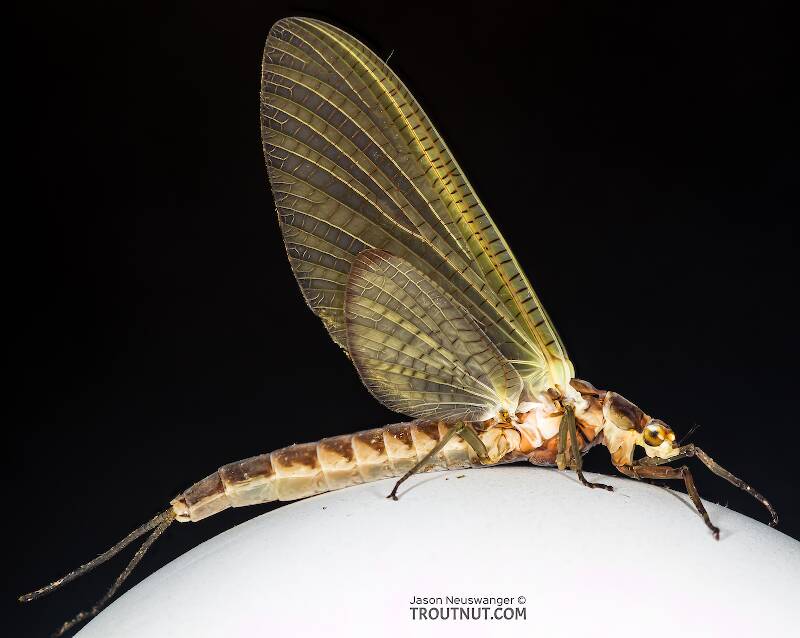
Hex Mayflies
Hexagenia limbata
The famous nocturnal Hex hatch of the Midwest (and a few other lucky locations) stirs to the surface mythically large brown trout that only touch streamers for the rest of the year.
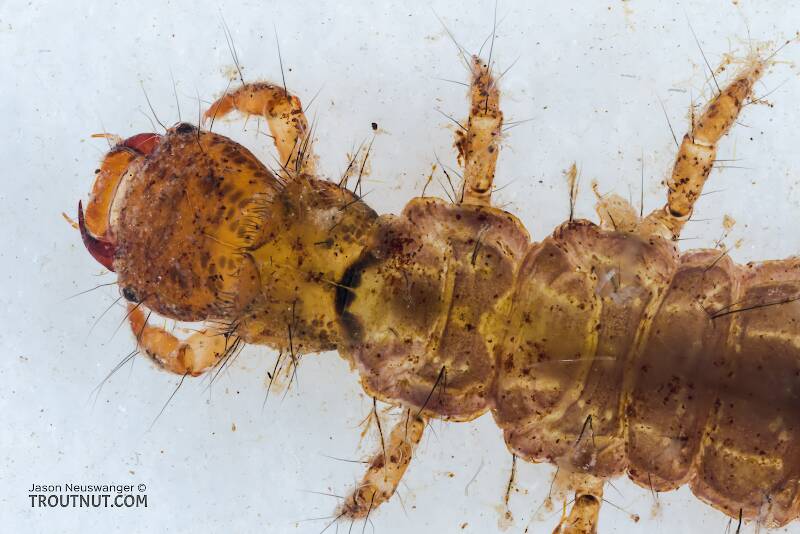

Aquatic Insects of our Trout Streams
Aquatic Insects of our Trout Streams
Troutnut.com has 7594 pictures of 1384 subjects, and a growing library of behavioral information to help us understand and better imitate the insects and other invertebrates trout eat.
The site is organized by scientific name, but you can find things through the directory of common names too. You may also find the introduction to the taxonomic classification system helpful.
The big four
The vast majority of flies we use as anglers, if they are meant to be literal imitations of anything, imitate one of these four kinds of insects. Mayflies were the first to be taken seriously, and they inspired many classic old-time dry flies. However, it's common for any of the other three to be equally or more important to trout.
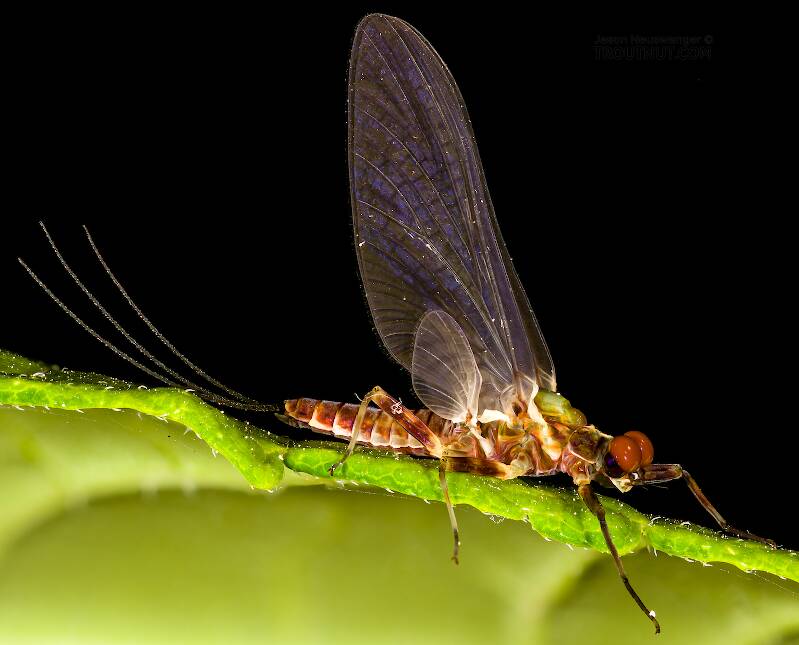
Mayflies
Ephemeroptera
Mayflies are the most important insects for anglers to understand, because they are common on trout streams, they often hatch in frenzied bursts of activity, and their behavior varies so widely between families and sometimes even species that it's useful to know and imitate the habits of each. They are a primitive order of insects, and their elegance and delicate lives have made them popular beyond the world of trout fishing.
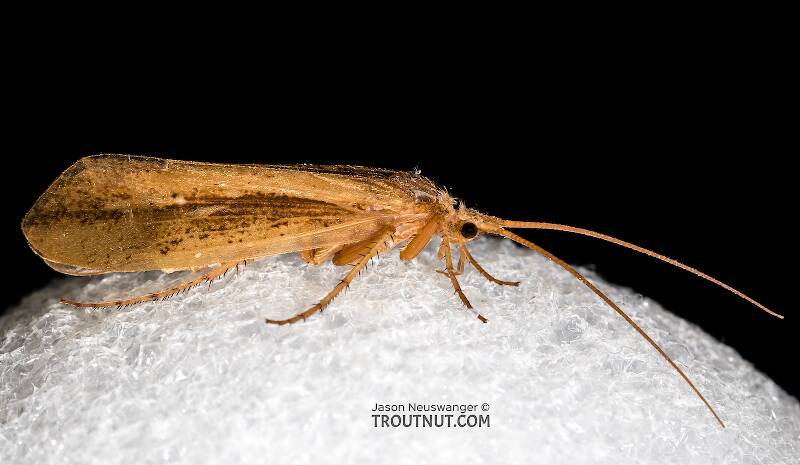
Caddisflies
Trichoptera
Some anglers consider caddisflies to be even more important than mayflies. On many rivers, they're right. Angler-entomologists focus less energy on them because they are slightly less prone to cause a feeding frenzy among the trout. Although that happens sometimes, they are more commonly an intermittent food source during the times when it seems like nothing's hatching. Understanding their life cycle is of paramount importance to any fly fisher, but learning their species-specific idiosyncrasies is less useful than with mayflies.
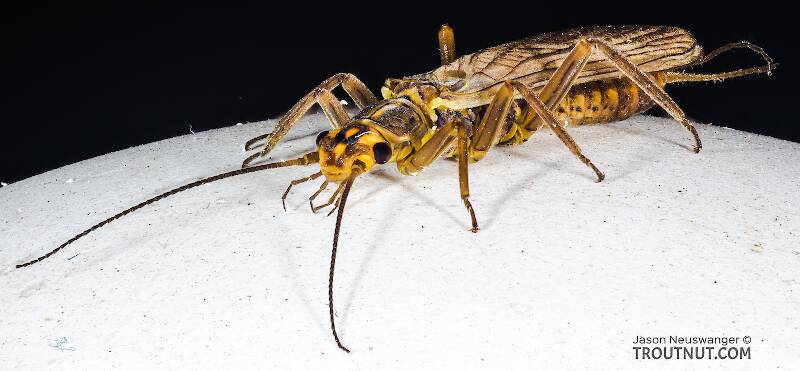
Stoneflies
Plecoptera
Though less prolific than mayflies and caddisflies, many stonefly species make up for in size what they lack in numbers. Because they emerge by crawling out of the water on land, the hatching adults are not eaten for trout, but their large nymphs are welcome food year-round. In the Western states, where stoneflies are most prolific, trout sometimes feed selectively on the egg-laying adults as they return to the water.
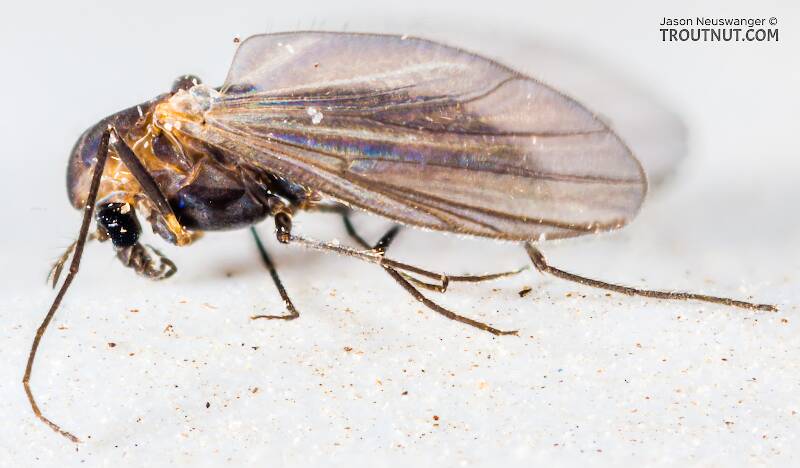
Midges
Chironomidae
Midges are most popular with anglers who fish fertile, placid spring creeks and stillwaters. Their often tiny size frustrates anglers who encounter trout feeding selectively on their frequent hatches. Their many thousand species are impossible to sort out, but they all share similar stages and behavior as far as the angler is concerned.
Other invertebrates to know
All of these are eaten by trout at times, although they may not often elicit the kind of picky feeding that requires a convincing imitation. Nevertheless, as you study the bugs you find on the water yourself, it's nice to know the basic identities of the oddballs that frequently turn up.
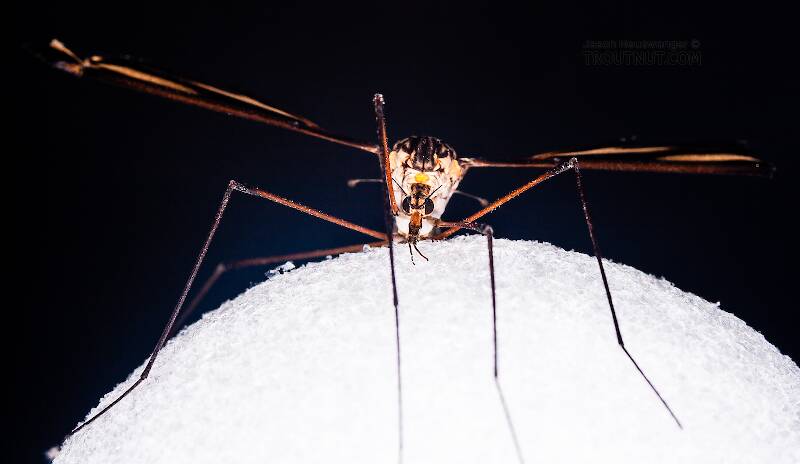
Craneflies
Tipulidae
Craneflies, which look like midges only much larger, are occasionally important to trout as they lay their eggs over the water.
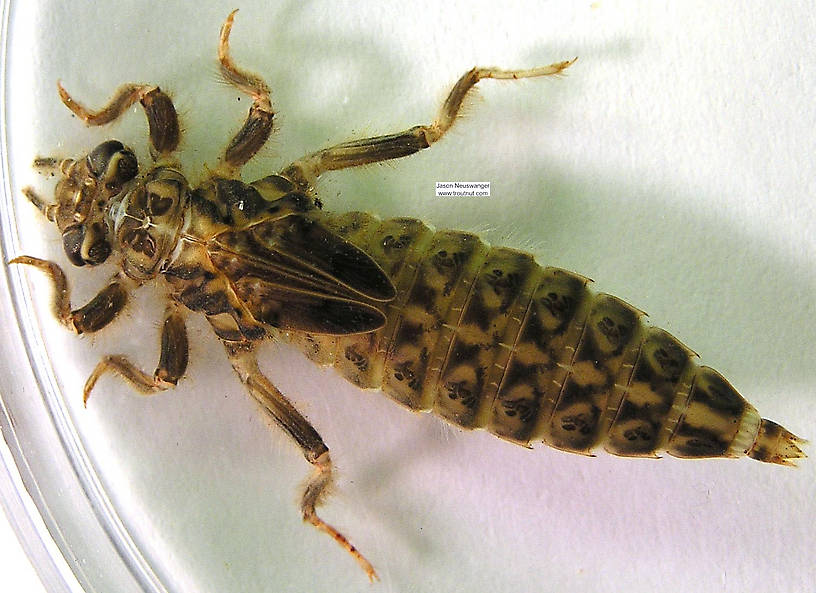
Dragonflies
Odonata-Anisoptera
Dragonfly adults are very rarely vulnerable to trout because they are superb at flight, but their large, slow nymphs are welcome food. The adults and nymphs are both impressive predators upon other insects, and I have watched adult dragonflies kill large mayfly duns and tear through a cloud of midges at rate of several per second.
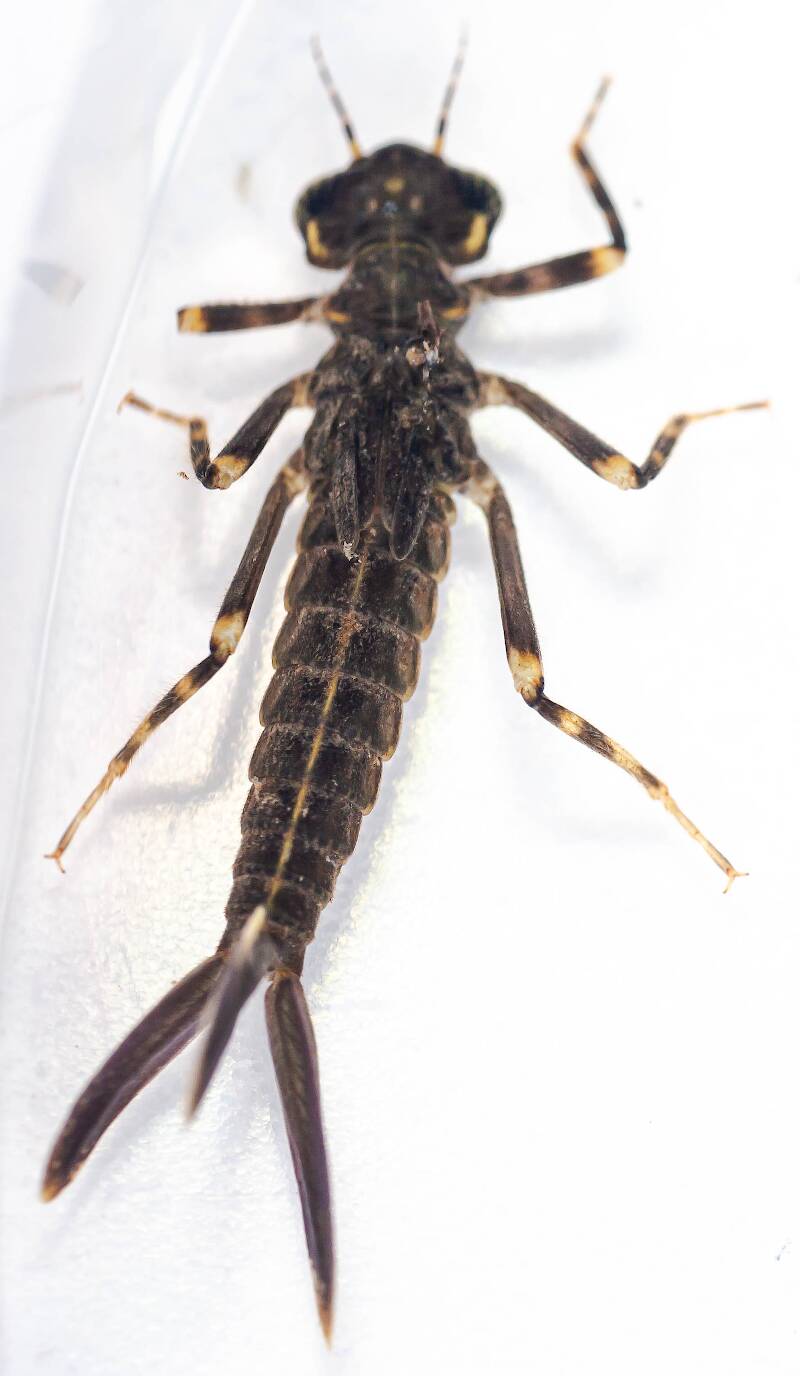
Damselflies
Odonata-Zygoptera
Damselflies mirror the closely related dragonflies (scientifically, they are different suborders of the order Odonata) in that the adults are excellent at flight and only the nymphs are likely to fall prey to trout. Their nymphs differ in the way they look, move, and respirate, but they share the same alpha predator status in the world of aquatic insects.
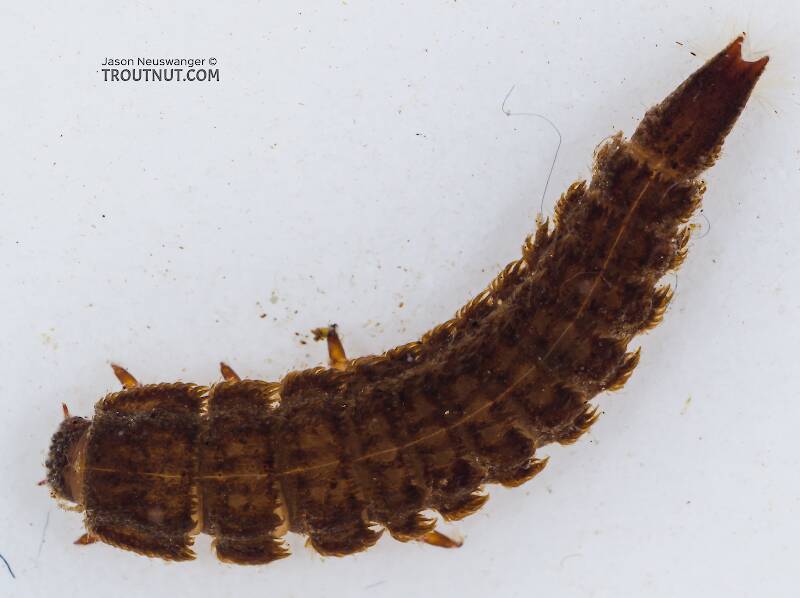
Beetles
Coleoptera
Beetles are the largest order of insects, and their many species come in contact with trout in three ways. The most popular among fly fishers are the species which live on land and occasionally fall or get blown into the water. But some species live their entire lives underwater, and still others live underwater only as larvae with a wide variety of unusual shapes and habits.
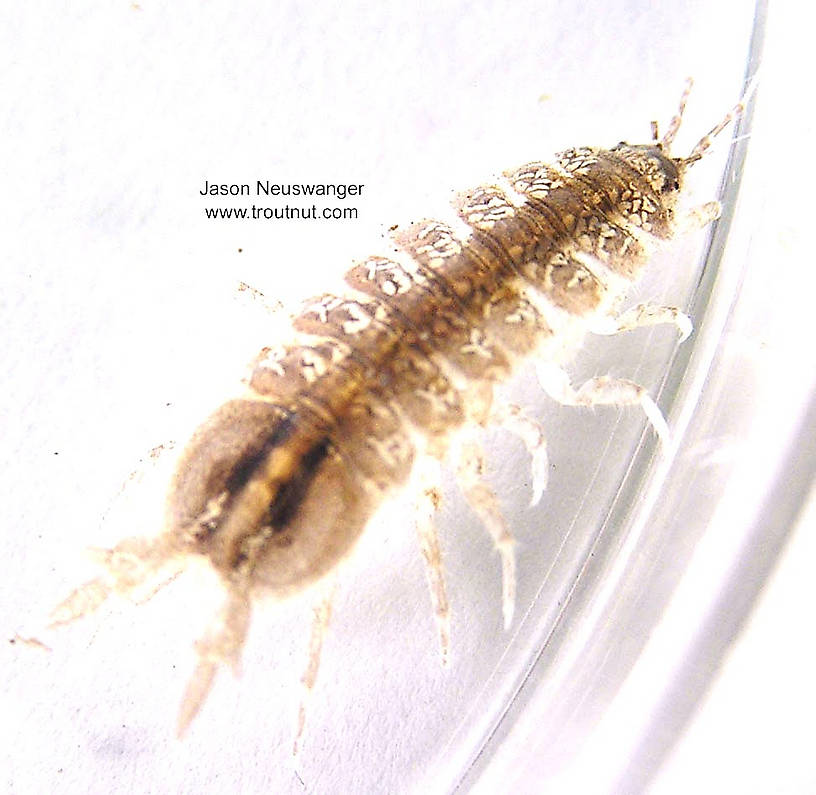
Sowbugs
Isopoda
Sowbugs are not quite as prolific or as important as scuds (Amphipoda), but in certain waters they are more common and serve the same role.
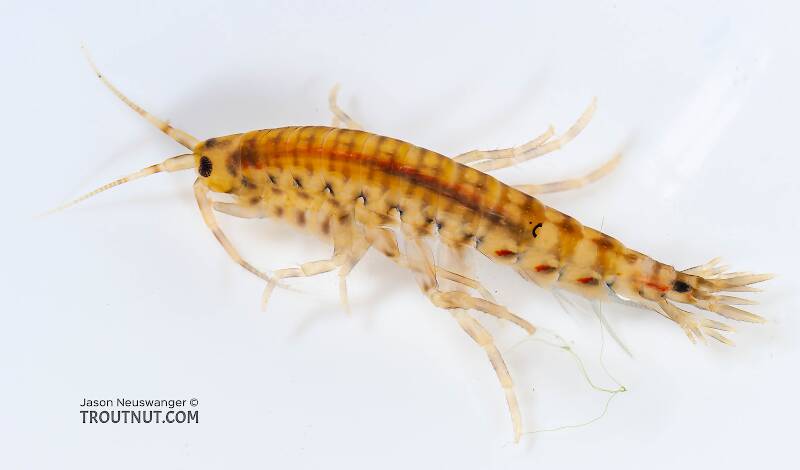
Scuds
Amphipoda
Scuds are not insects but small crustaceans, sometimes called freshwater shrimp, and in some streams they are a primary food source for trout. They grow quickly and can survive in a variety of habitats, but they are most prolific and important to trout in slow, weedy spring creeks. Unlike most aquatic insects, they never "hatch" into a dry form.
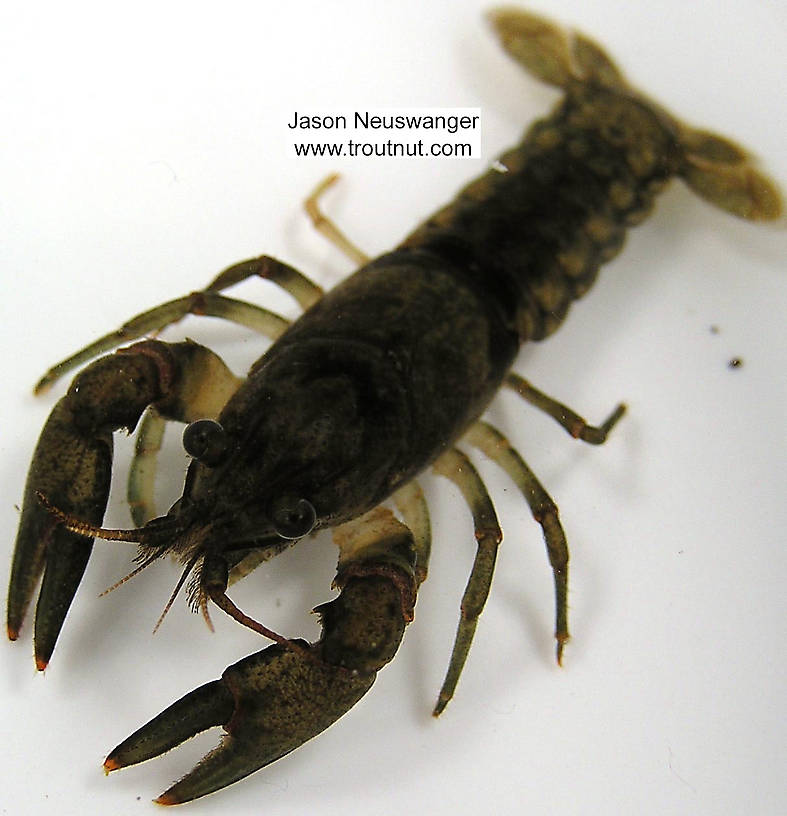
Crayfish
Decapoda
Crayish require no introduction, but their importance to trout is often understated. They are a favorite of many large freshwater gamefish, and trophy trout are no exception.
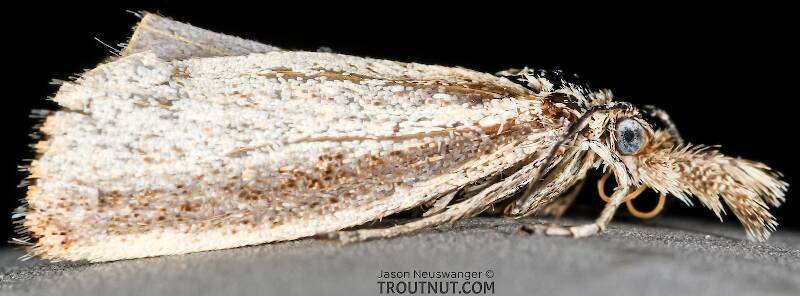
Moths
Lepidoptera
Some species of moths have aquatic larvae or live near streams where the adults are commonly available for trout. They can be easily mistaken for caddisflies.
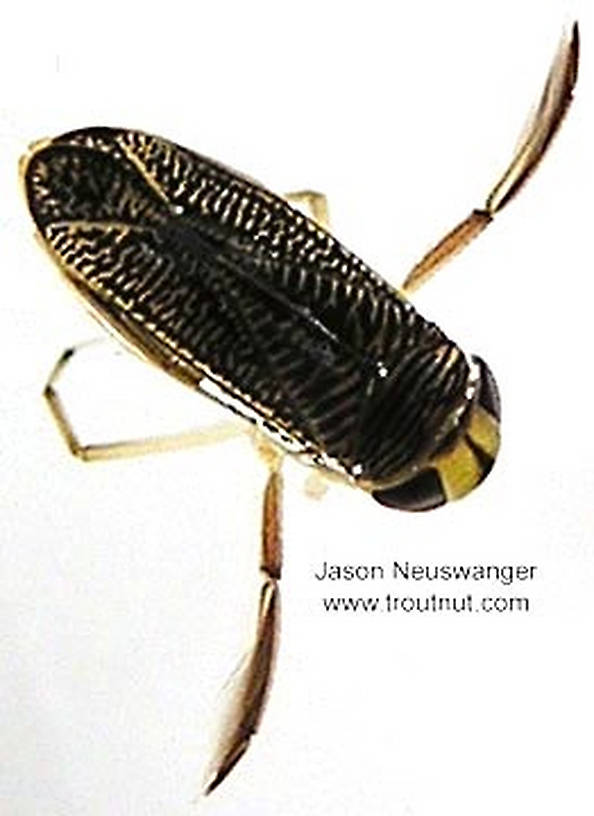
Water Boatmen
Corixidae
Water boatmen are in the order Hemiptera, the "true bugs," along with water scorpions, giant water bugs, and backswimmers. They are present in many trout streams but are more important as a food source in lakes and spring ponds. The nymphs and adults look similar and the adults cannot breathe water, but carry small air bubbles with them for respiration. They sometimes fly up out of the water in the early season to mate, leaving anglers witnessing a very confusing "hatch."
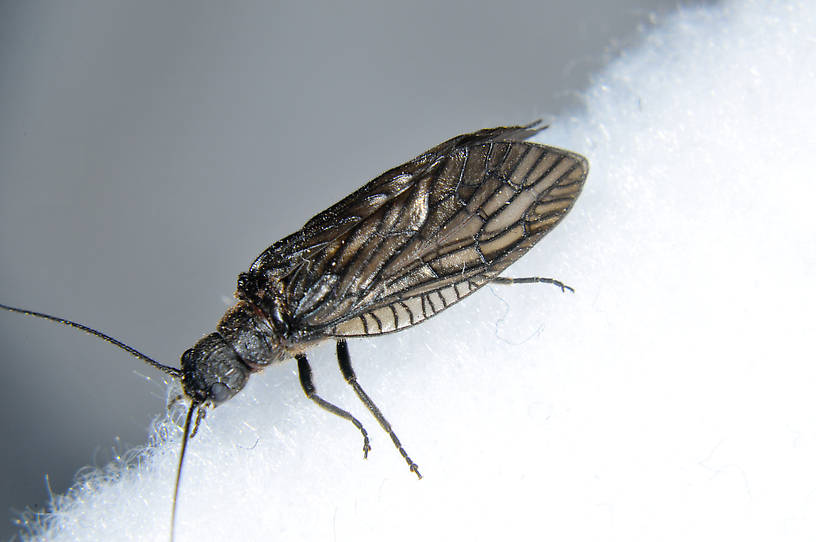
Alderflies
Sialidae
Alderflies are close relatives of dobsonflies and their larvae resemble the better-known hellgrammites. Their life cycle is similar and they are never available to the trout en masse, but they are loose in the drift often enough to be of value.
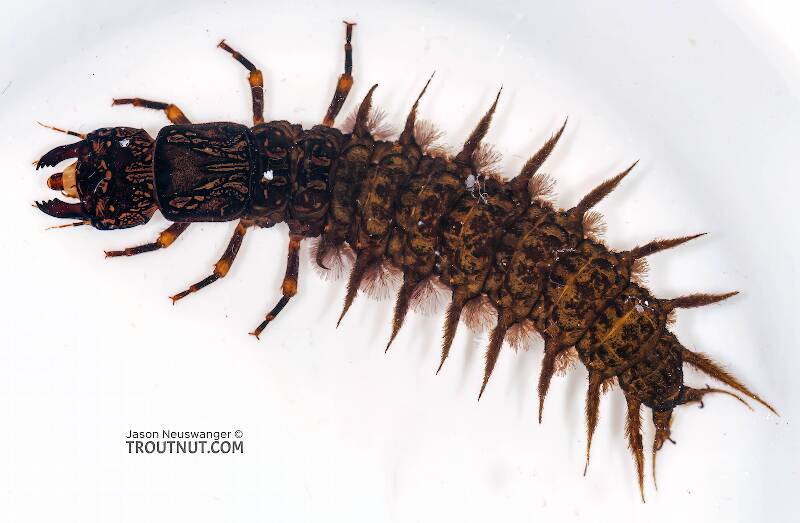
Dobsonflies and Hellgrammites
Corydalus
Dobsonflies and their predatory larvae, the hellgrammites, are among the largest trout stream insects. They are best known as a good excuse for the rigid imitationist to fish a wooly bugger. Their close relatives, the fishflies of Nigronia and Chauliodes, are more good reasons.

